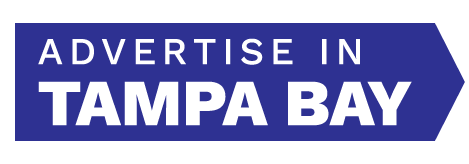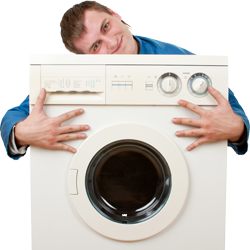Before the onset of COVID-19, more than 430,000 Tampa Bay households were planning to spend $859 million on furniture, according to Nielsen. Unfortunately, many of those plans were put on pause as consumers sheltered in place to help slow the spread of the virus.
A recent study by Elevate | SmithGeiger suggests that the fortunes of home furnishing retailers, however, are about to improve.
According to the study, 32% of consumers who had been planning to buy furniture will do so within three months of the pandemic easing. Fifty percent will do so within six months. The numbers for mattress shoppers are even stronger.
To capture a significant share of the post-pandemic sales of furniture and mattress will require retailers to advertise. The most effective way to reach the customers who are ready to buy is on Tampa radio.
Read More
Topics
small business,
small business owner,
store traffic,
best way to advertise,
radio advertising,
retail stores,
small business advertising,
furniture,
mattress,
Retail Sales,
Retailer,
retail,
advertise on radio
There are more than two million registered voters in Tampa Bay. Here is the number by county:
- Hernando: 140,935
- Hillsborough: 882,706
- Pasco: 371,297
- Pinellas: 680,054
According to Nielsen, Tampa radio reaches significantly more of these registered voters than all other media, including local television pay-TV, newspaper, social media platforms, and streaming audio sites like Pandora or Spotify.
To be elected, however, requires candidates for every office to share their message with those who are not only registered but who are likely to vote. Advertising on Tampa radio will reach, by far, the most voters who can be counted on to show up on election day.
Read More
Topics
best way to advertise,
radio advertising,
issue advertising,
political advertising,
advertise on radio,
election advertising,
political rates,
voters,
registered voters,
likely voters,
political rate card
Following the lead of many national marketers, some Tampa Bay small business owners are considering canceling or, at minimum, pausing their advertising schedules with social media network Facebook and its co-owned photo-sharing platform, Instagram.
According to the New York Times, "more than 400 companies, from Coca-Cola and Adidas to Ford and Lego, have vowed to halt advertising on the social network, in a growing protest over how it handles hate speech and other harmful content".
With the pandemic figured in, Tampa Bay small business owners were expected to spend $164million on Facebook and Instagram advertising in 2020. This is according to Borrell Associates, a firm that specializes in the collection and analysis of local marketing expenditures in every city across the United States. But these expenditures could shrink if the protests become louder.
Every type of Central Florida business imaginable, including clothing stores, plumbers, HVAC repair, funeral homes, restaurants, dentists, and nonprofits, has come to realize how powerfully social media can contribute to their bottom lines.
Part of what makes Facebook and Instagram attractive to small business owners is the enormous reach these platforms have among consumers. Locally, the audience size for these two social media sites now rival Tampa radio, TV, cable, and newspaper outlets.
For small business owners considering a hiatus from social media advertising, there is a viable way to redirect these dollars into a different medium without losing the marketing equity or momentum built-up on Facebook.
Read More
Topics
small business,
small business owner,
best way to advertise,
radio advertising,
facebook advertising,
instagram,
facebook,
social media advertising,
social media,
advertise on radio
Based on statistics from the Bureau of Labor Statistics, before the COVID-19 crisis, Tampa Bay households were putting more than $7.9 billion in the bank every year.
Since February, however, Tampa area banks and credit unions noticed that customers' savings accounts were beginning to swell to record levels.
According to the Federal Reserve, for many years, the personal savings rate has hovered well below 10%. The PSR is the percentage of personal disposable income that remains after taxes and all other spending.
In April of this year, the PSR hit an all-time high of 33%. The rate remained at stratospheric levels in May, as well. The previous record high was 17.3% in September of 1975 at the tail-end of a deep recession.
There are 4547 banks and credit unions in Florida who would love to earn a large share of this infusion of new savings. To compete, though, requires advertising. By almost any metric, the best way to reach new depositors is by advertising on Tampa radio.
Read More
Topics
small business,
small business owner,
best way to advertise,
radio advertising,
small business advertising,
bank,
advertise on radio,
certificate of deposit,
credit unions,
savings accounts
From Carrollwood to Brandon (and every point in between), Tampa Bay real estate agents see a robust, post-pandemic market shaping up. Home sales are being driven by record low-interest rates.
The average rate for a 30-year fixed rate in June is 3.17%, according to Freddie Mac. This is down from 3.99% June of last year. That difference could save a Tampa area home buyer close to $30,000 over the term of a loan.
Data from the Federal Reserve indicates that one of the fast-growing segments of the current real estate market is starter homes. Sales in May for these modest price houses have risen above pre-COVID-19 levels and have hit a three year high.
Feuling the starter home market is demand from millennials. This generation now comprises 37% of all home buyers, says the National Association of Realtors Research Group.
To claim a large share of the market for starter homes, local real estate agents will need to advertise to attract these buyers. By almost any metric, advertising on Tampa radio is the best way to reach millennials planning to buy a house, condo, or co-op over the next year.
Read More
Topics
Real Estate,
small business,
small business owner,
best way to advertise,
radio advertising,
mortgage,
home sellers,
advertise on radio,
home buyers,
real estate agent,
mortgage rates
During lockdown, Tampa Bay consumers have been postponing the purchase of major appliances. Despite the pause in buying, however, local shoppers are still expected to spend $174 million this year on ovens, stoves, refrigerators, freezers, washing machines, dryers, and dishwashers.
Here's how appliance sales in the Tampa area will breakdown by category:
- Cooking: $47,400,000
- Refrigerator/Freezer: $43,900,000
- Laundry: $36,100,000
- Other: $47,000,000
Based on traditional buying patterns, at least 60% of all major appliance sales will occur between now and December.
To capture a larger share of all this spending will require local appliance dealers to advertise.
“Think you have a great product?” asks the U.S. Small Business Administration. “Unfortunately, no one’s going to know about it unless you advertise.”
The SBA goes on to say, “Advertising, if done correctly, can do wonders for your product sales, and you know what that means: more revenue and more success for your business”.
By almost any measure, advertising on Tampa radio is the best choice for local appliance store owners.
Read More
Topics
Return On Investment,
ROI,
small business,
small business owner,
best way to advertise,
radio advertising,
retail stores,
consumer spending,
Retail Sales,
Retailer,
retail,
advertise on radio,
appliance stores
Despite the pandemic, Tampa Bay consumers are expected to spend $164 million on fine jewelry this year. Based on projections from IBISWorld, here's what will be purchased:
- $69 million worth of diamonds
- $24 million worth of watches
- $16 million worth of gold
- $19 million worth of pearls and gemstones
- $34 million in other goods and services
Tampa business owners will now have an easier time capturing a bigger share of jewelry expenditures as a monster competitive force disappears.
This week, Signet, the largest jewelry retailer in the country, announced that by December, it would be closing over 380 stores. Signet's brands familiar to Central Florida consumers include Kay, Jared, Zales, and Piercing Pagoda.
To successfully compete for the void created by fewer Signet stores, local retailers will need to advertise, especially between now and the end of the year. This is when 63% of all fine-jewelry sales traditionally occur.
By any metric, the best way to reach local jewelry buyers is by advertising on Tampa radio.
Read More
Topics
Return On Investment,
ROI,
small business,
small business owner,
best way to advertise,
radio advertising,
retail stores,
wedding,
bridal marketing,
consumer spending,
Retail Sales,
Retailer,
retail,
advertise on radio,
jewelry store
At the dawn of 2020, Tampa Bay small business owners were expecting the area's retail economy to expand by 4.1%. This optimism was stoked by the National Retail Federation's chief economist who said, "Consumers remain upbeat and have the confidence to spend, and the steady wage growth that has come with the strong job market is fueling their spending. The state of the consumer is very healthy."
By February, however, the country entered into a COVID-19 induced recession. Then, to slow the spread of the pandemic, on April 3, the Governor of Florida locked the state down. This brought the Tampa area's $54.1 billion retail economy to a standstill.
As stores, restaurants, and offices in Tampa Bay begin to re-open, consumers' appetite for spending is returning. According to Nielsen, loyal radio listeners are very likely to be first in line at the cash registers.
Read More
Topics
small business,
small business owner,
best way to advertise,
retail stores,
consumer spending,
car dealers,
Retail Sales,
Retailer,
retail,
corona,
coronavirus,
covid19,
reopening,
advertise on radio,
automotive,
recovery
Tampa Bay small business owners are learning that 're-opening' may not be an appropriate word for the challenges they face as the Coronavirus crisis winds down. A better term might be 're-introducing'.
Since the Governor of Florida shuttered the state on April 3, to slow the spread of COVID-19, Tampa area consumers have discovered new ways to buy the goods and services they need. It's now the burden of local business owners to lure these customers back. The first step is re-introduction.
In 1922, WDAE, signed on as the first radio station in Tampa Bay. Since then, local business owners have used radio advertising to introduce themselves successfully to new customers. Radio has also helped these businesses survive recessions, depressions, world wars, hurricanes, and blizzards. By any metric, advertising on Tampa radio remains the most effective tactic a small business owner can use post-pandemic, as well.
Read More
Topics
Return On Investment,
ROI,
small business,
small business owner,
prime time,
daypart,
best way to advertise,
radio advertising,
effective radio commercials,
commercial length,
small business advertising,
reopening
More than 93% of Tampa Bay households own at least one vehicle.
Pre-pandemic, 86% of workers spent, on average, 60 minutes every weekday in these cars commuting to-and-from their jobs.
On their way to work, many of these drivers would contribute to Tampa Bay's $59.3 billion retail economy by visiting the convenience stores, coffeehouses, auto repair centers, gas stations, daycares, grocery stores, or hundreds of other businesses they passed.
At lunchtime, these same cars would take their owners to restaurants, dentist appointments, nail appointments, barbershops, and on an infinite number of other errands.
On the weekends, these vehicles filled the parking lots of hardware stores, furniture stores, car dealers, appliance stores, bowling alleys, movie theatres, and nightclubs,
Then on April, when the Governor of Florida shut down the state to slow the spread of COVID-19, traffic came to a standstill and so did the spending.
There are strong indications, though, that in the Tampa area, roads are filling up again.
Read More
Topics
Return On Investment,
ROI,
small business,
small business owner,
best way to advertise,
radio advertising,
retail stores,
in-car advertising,
consumer spending,
Retail Sales,
Retailer,
retail,
vehicle traffic,
in-car audio













